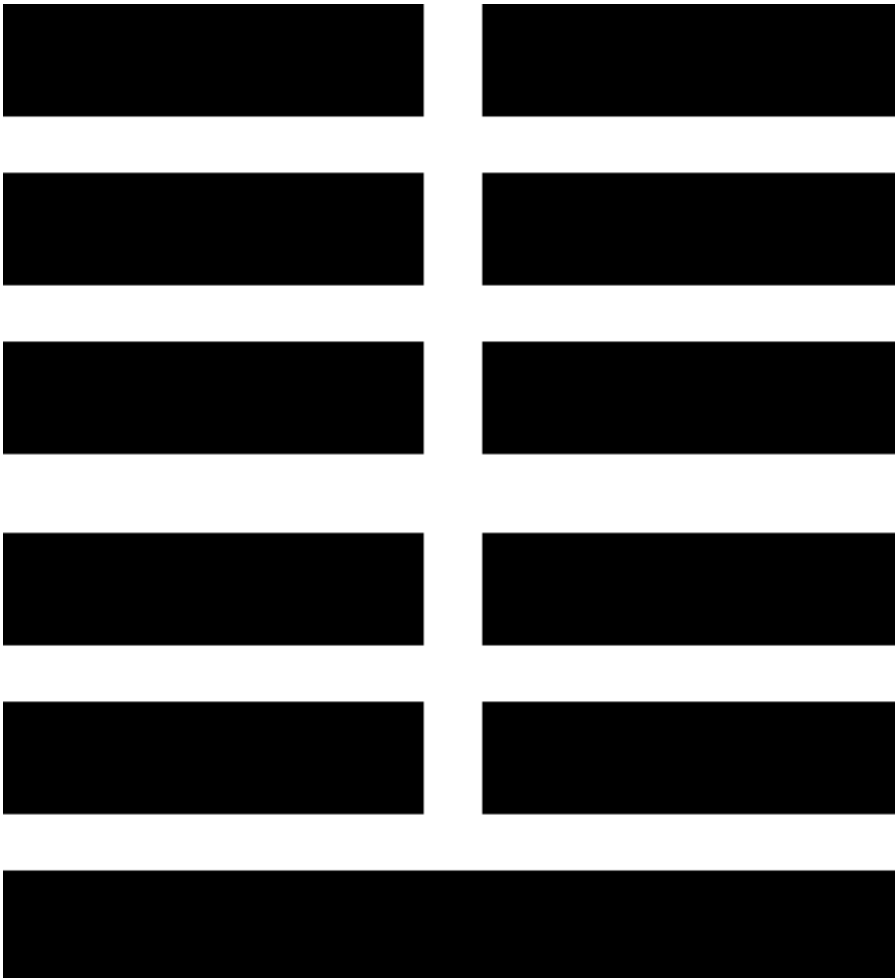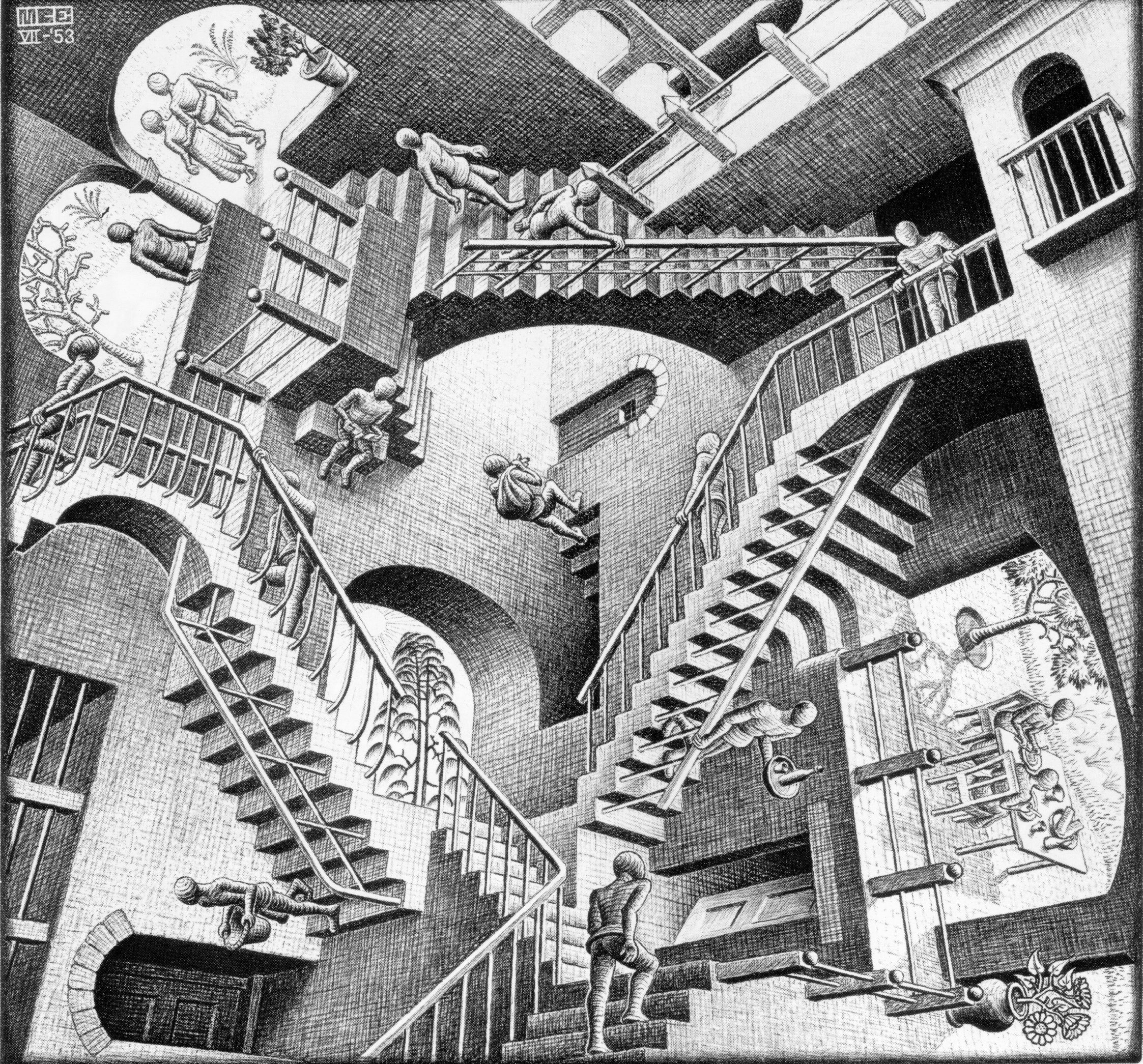The Bouleversement
Bouleversement1 is the non-space/non-point at which we realize that Hans and the moon-man are one and the same in an infinitely looping narrative action, that Arthur Pym has fallen out of his book, or that The General is a speaking text.
The Bouleversement as I define it exists within The Biblioscape in a Poe hoax. Definition is difficult because it functions across the realms of fiction and Reality, but it can be said to reside precisely at the point (or at the moment; both time and space are of course equally inadequate and delimiting conventions) at which the Möbius strip “converts” itself or makes the transformation that closes the loop happen. It is not so much a slippery concept as it is a simple variable. Try to view The Bouleversement as a function over time (even though it is a nanosecond event within the brain’s chemistry at the Moment of Recognition), as Edgar Poe would do. Remember that he thinks in systems and meta-systems, but his “systems analysis” is not of hardware and software architectures but in an ongoing questioning of what lies at the root of Thought and Meaning. Do we really make The Universe out of what we say? How does the double-edged sword of systemic thinking — a rigorous inquiry that promises to drive knowledge forward but by definition also must constrain what it can believe in as The Universe whose bounds are nearly arbitrary descriptive bonds that Poe instinctively abhors on intellectual, not aesthetic, grounds — how does it help and how does it hurt?
Try not to think of “bouleversement” as strictly a 1:1 flip-flop or exchange. A closer analogy might be an inversion point or sort of wormhole, but it might just as well be defined as that (geometric) point at which the navel-gazer disappears into himself, or perhaps better, the (chronological) flashpoint at which this occurs. For an image, play with a thaumatrope, just as one would do in 1835.  The Bouleversement is the moment of transformation within your perception, a secondary, not primary action within cognition. Injecting The Bouleversement into a piece of fiction probes the point at which perception becomes interpretation becomes knowledge. Does “belief” then become irrelevant? Let’s not get hysterical.
The Bouleversement is the moment of transformation within your perception, a secondary, not primary action within cognition. Injecting The Bouleversement into a piece of fiction probes the point at which perception becomes interpretation becomes knowledge. Does “belief” then become irrelevant? Let’s not get hysterical.
In a Poe hoax The Bouleversement exists briefly, and is perceptible only at the Moment of Recognition. It is both the spark and the recipient of the shared hoaxing moment. It is self-generating, then flares out. It is The Turning Point.

I Ching Hexagram 24. Fu / Return (The Turning Point). https://www.iching-online.com/hexagrams/iching-hexagram-000001.html. Accessed March 28, 2022.
It exists only within our minds but is deeply rooted within the text — Poe always undercuts the attempt at “interpretation” that might trend toward loftiness with an in-your-face exposê of the reading situation, a tête-à-tête grounded in smeary type smashed into virgin paper stock. The mercenary undercurrent of trade intrudes at this point but only when we pull out of the text to consider social consequences. Let’s not; the thing at hand is bouleversement.
The moment/point of bouleversement exists exactly when/where the staircases switch direction in Escher’s Relativity:

Common media.
That is to say, The Bouleversement is effervescent and fleeting, but we know it does exist because it happens to us (within us). We “see” the effect happen but feel it as the perspective swaps. The turn or lurch of The Bouleversement is disquieting and makes for a certain queasiness and unease. It is unreal, and foreign to Understanding. It is experienced as thoroughly apart from and outside us, which is an effect antithetical to what an author usually seeks for the reader of Poe’s time. This feltness may be more acute than what we can imagine as lived experience today — or perhaps we flatter ourselves to feel jaded.
At The Bouleversement, energy feeds within itself. Like a self-sustaining wormhole, it is both parasite and host simultaneously.

www.sciencenewsforstudents.org
Any fixed image of course results only in distortion, but this comes close to representing the Moment of Recognition in the twin but united planes; the bright flash would represent the Moment of Recognition in my scheme. It might not always be “flashy,” but it will be an instantaneous and profound shift in thought by definition.
Perhaps a better illustration would impart the feeling of transformative power of The Bouleversement through a blur effect (motion implied):

Is the motion inward or outward?
Once experienced, The Bouleversement lingers in the consciousness. The experience cannot be undone, just as a bell cannot be unrung. It is the entranceway to solving the hoax, instantiates the Moment of Recognition, and yet it does not exist. At least not in any way that we can describe “normally.”

Is Sagittarius A a real-life instantiation of The Bouleversement at the heart of The Biblioscape?
We can say that The Bouleversement in a Poe hoax:
- exists only within the reading mind (perhaps as a lingering and disquieting subversive element)
- is trans-dimensional, that is, the fictitious “characters” of the narrative can become typeset characters that jump off the page into our lives (cf. “Racism in Pym”)

- is indicated only by non-announcing puns and sideways allusions
No “true” Poe hoax exists outside this definition; The Bouleversement is its constituent component — a hinge point, if you will. The other hoaxical tales are supplementary and reflexive backward pointers.
Why does he do this? What is he working out?
